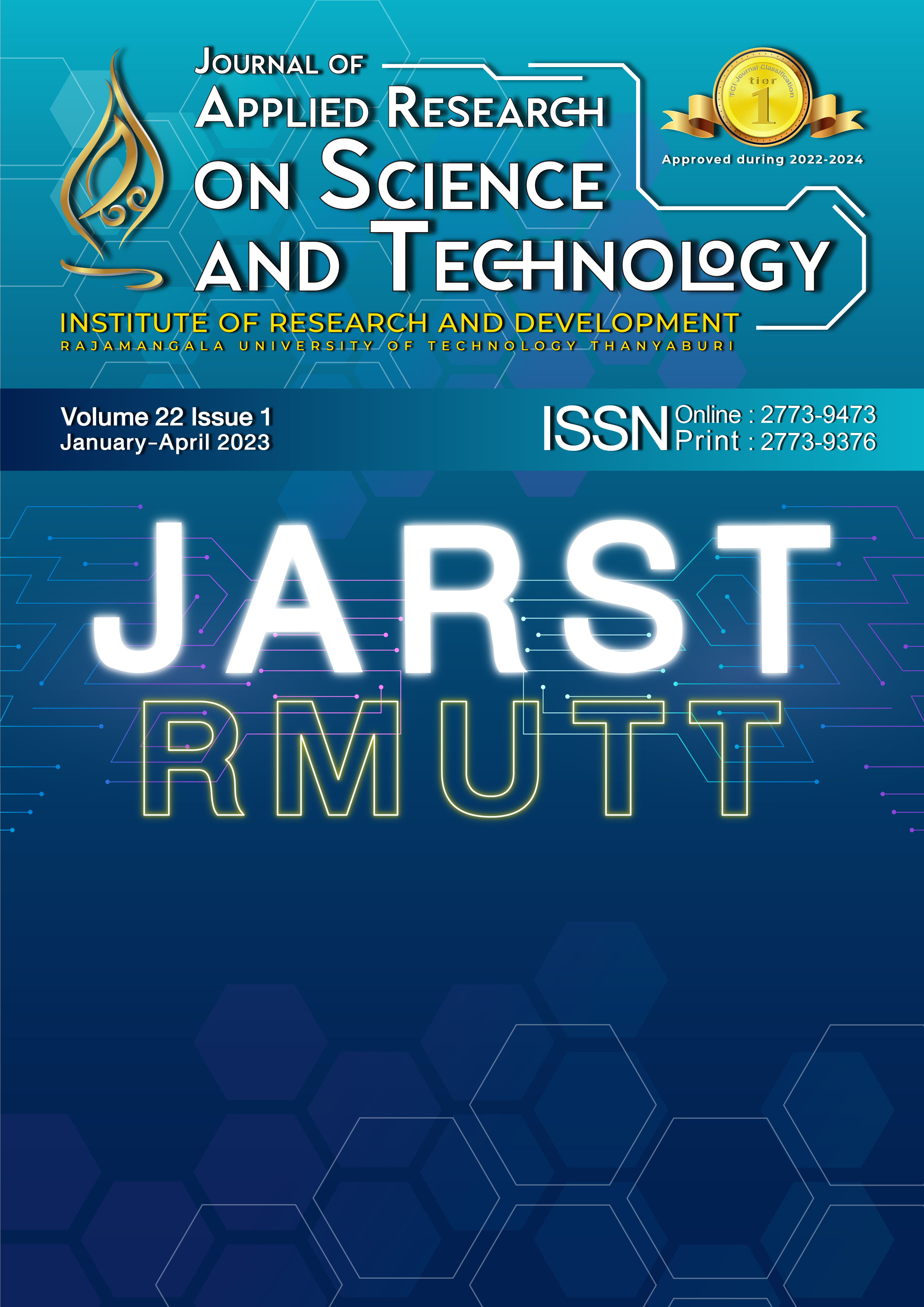The Relationship of Task Difficulty and Multitasking on Performance in Robot Arm Control
Main Article Content
Abstract
This research aims to study the relationship between task difficulty and multitasking on performance to control the robot arm. The experimental population was obtained randomly without probabilities, based on the study of specific groups. It was testing in the ABB Robot Studio simulation program with mathematical test questions. The Task’s difficulty is divided into simple and complex manipulation of the robotic arm. Multitasking is a level 1 and level 3 math test. Performance is error percentage, reaction time, and workload or mental workload with the NASA TASK LOAD INDEX (NASA-TLX). The research results were analyzed using Paired sample t-test statistical methods using the Minitab18 program. The results showed that the NASA-TLX workload assessment scores and the mean reaction time of the easy and challenging robotic arms combined with level 1 and level 3 were significantly different at 0.05. The mean reaction time of the robotic arm alone was less than the mean reaction time of the robotic arm with both levels of mathematics tests. In conclusion, task difficulty and multitasking were positively correlated with the mean reaction time applied to the robotic arm. The error percentage of using the robot arm only was less than using the robot arm together with the mathematics test at both levels, with statistical significance at the 0.05 level. It was concluded that task difficulty and multitasking were positively correlated with error percentage. The difficulty of the task and multitasking affected the efficiency of the robotic arm.
Article Details

This work is licensed under a Creative Commons Attribution-NonCommercial-NoDerivatives 4.0 International License.
References
Intranon K. Ergonomics. Bangkok: Chulalongkorn University Press; 2005.
Sherman MT, Seth AK. Effects of expected task difficulty on metacognitive confidence and multitasking. PsyArXiv. 2021. Availability from: https://doi.org/10.31234/osf.io/3gfp2
Suwanwatin P. Perceived workload and burnout in flight attendants. where communication within the organization and work stress were the guiding variables. [master's thesis]. Pathum Thani: Thammasat University; 2016.
Hart SG. NASA-task load index (NASA-TLX); 20 years later. In: Proceedings of the human factors and ergonomics society annual meeting. Sage CA: Los Angeles, CA: Sage publications, 2006. p. 904-8.
Fallahi M, Motamedzade M, Heidarimoghadam R, Soltanian AR, Miyake S. Effects of mental workload on physiological and subjective responses during traffic density monitoring: A field study. Appl Ergon. 2016;52:95-103.
Gloria Y, Lyubov Z, Hooper V. Assessment of workload using NASA Task Load Index in perianesthesia nursing. J Perianesth Nurs. 2008;23(2):102-10.
Sugarindra M, Suryoputro MR, Permana AI. Mental workload measurement in operator control room using NASA-TLX. IOP Conference Series: Materials Science and Engineering. IOP Publishing. 2017;277(1):1-6.
Ramkumar A, Stappers PJ, Niessen WJ, Adebahr S, Schimek-Jasch T, Nestle U, et al. Using GOMS and NASA-TLX to Evaluate Human–Computer Interaction Process in Interactive Segmentation. Int J Hum-Comput Int. 2017;33(2):123-34.
Li W, Li R, Xie X, Chang Y. Evaluating mental workload during multitasking in simulated flight. Brain Behav. 2022;12(4):e2489.
Liu L, Schoen AJ, Henrichs C, Li J, Mutlu B, Zhang Y, et al. Human Robot Collaboration for Enhancing Work Activities. Human Factors [Internet]. 2022. Availability From: doi.org/10.1177/00187208221077722
Schnedler W. Task Difficulty, Performance Measure Characteristics, and the Trade-Off between Insurance and Well-Allocated Effort. (May 2006). IZA Discussion Paper No. 2124.
Memar AH, Esfahani ET. Objective assessment of human workload in physical human-robot cooperation using brain monitoring. ACM Transactions on Human-Robot Interaction (THRI). 2019;9(2):1-21.
Wallén J. The History of the Industrial Robot. Linköping. [Internet]. LiTH-ISY-R. 2008. Availability from: http://urn.kb.se/resolve?urn=urn:nbn:se:liu:diva-56167
ABB Robotics Global Media Relations. ABB robots accelerate COVID-19 vaccine development in Thailand [Internet]. 2020. [cited 2021 Aug 23]; Availability from : https://new.abb.com/news/detail/72021/abb-robots-accelerate-covid-19-vaccine-development-in-thailand.
Adler RF, Benbunan-Fich R. The effects of task difficulty and multitasking on performance. Interact Comput. 2015;27(4):430-9.


